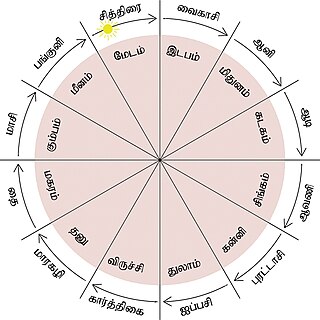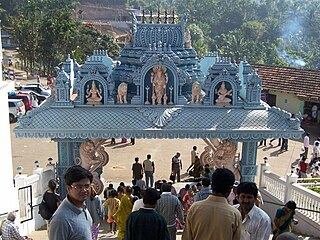Related Research Articles

The traditional Chinese calendar is a lunisolar calendar which identifies years, months, and days according to astronomical phenomena. In China, it is defined by the Chinese national standard GB/T 33661–2017, "Calculation and Promulgation of the Chinese Calendar", issued by the Standardization Administration of China on May 12, 2017. Traditional Chinese calendar also known as these five titles: Nongli Calendar, Jiuli Calendar, Laoli Calendar, Zhongli Calendar, Huali Calendar

The Rat or Mouse is the first of the repeating 12-year cycle of animals which appear in the Chinese zodiac, constituting part of the Chinese calendar system. The Year of the Rat in standard Chinese is Chinese: 鼠年; pinyin: shǔnián. The rat is associated with the first branch of the Earthly Branch symbol 子 (zǐ), which starts a repeating cycle of twelve years. The Chinese word shǔ refers to various small rodents (Muroidea), such as rats and mice. The term "zodiac" ultimately derives from an Ancient Greek term referring to a "circle of little animals". There are also a yearly month of the rat and a daily hour of the rat. Years of the rat are cyclically differentiated by correlation to the Heavenly Stems cycle, resulting in a repeating cycle of five years of the rat, each rat year also being associated with one of the Chinese wu xing, also known as the "five elements", or "phases": the "Five Phases" being Fire, Water, Wood, Metal, and Earth.

A panchānga is a Hindu calendar and almanac, which follows traditional units of Hindu timekeeping, and presents important dates and their calculations in a tabulated form. It is sometimes spelled Panchāngamu, Pancanga, Panchangam, Panchaanga, or Panchānga, and is often pronounced Panchāng. Panchangas are used in Jyotisha.

Gangotri is a town and a Nagar Panchayat (municipality) in Uttarkashi district in the state of Uttarakhand, India. It is 99 km from Uttarkashi, the main district headquarter. It is a Hindu pilgrim town on the banks of the river Bhagirathi – the origin of the river Ganges. The town is located on the Greater Himalayan Range, at a height of 3,100 metres (10,200 ft). According to a popular Hindu legend, the goddess Ganga descended here when Shiva released the mighty river from the locks of his hair.

The Tamil calendar is a sidereal solar calendar used by the Tamil people of the Indian subcontinent. It is also used in Puducherry, and by the Tamil population in Sri Lanka, Malaysia, Singapore, and Mauritius.
Some numbers are believed by some to be auspicious or lucky or inauspicious or unlucky based on the Chinese word that the number sounds similar to. The numbers 2, 3, 6, and 8 are generally considered to be lucky, while 4 is considered unlucky. These traditions are not unique to Chinese culture, with other countries with a history of Han characters also having similar beliefs stemming from these concepts.

In Thailand, two main calendar systems are used alongside each other: the Thai solar calendar, based on the Gregorian calendar and used for official and most day-to-day purposes, and the Thai lunar calendar, used for traditional events and Buddhist religious practices.
Often called lunar mansion, a lunar station or lunar house is a segment of the ecliptic through which the Moon passes in its orbit around the Earth. The concept was used by several ancient cultures as part of their calendrical system.

Maghe Sankranti is a Nepali festival observed on the first of Magh in the Vikram Sambat (B.S) or Yele calendar bringing an end to the winter solstice containing month of Poush. Tharu people celebrate this particular day as new year. It is also regarded as the major government declared annual festival of the Magar community. Maghe Sankranti is similar to solstice festivals in other religious traditions.

The Annapoorneshwari Temple is a Hindu temple dedicated to the goddess Annapoorneshwari (Annapoorna), located at Horanadu, Karnataka, India, 100 km from Chikmagalur in the thick forests and valleys of the Western Ghats of Karnataka. It is situated on the banks of river Bhadra.

A Bengali Muslim wedding is a Bengali wedding in accordance to Muslim faith which includes very few rituals and ceremonies that may span up to three days max. In most cases, it starts with the Paka Dekha ceremony. Then, nikkah which is done by a kaji with a fixed denmohor and it ends with the Bou Bhat ceremony that is popular as the wedding reception arranged by the groom's family.
Chinese pre-wedding customs are traditional Chinese rituals prescribed by the 禮記 (láih gei, the 儀禮 (yìh láih and the 白虎通 condensed into a series of rituals now known as the 三書六禮. Traditionally speaking, a wedding that incorporates all six rites is considered a daaih chéui.

Indian wedding clothes are elaborate set of clothes worn by the bride, bridegroom, and other relatives attending the wedding.
The Telugu Hindu wedding ceremony is the traditional wedding ceremony of the Telugu people in India. In the 19th century, the ceremony could last up to sixteen days. In modern times, it can last two or more days, depending on the family's financial and social status. The pelli or wedding is considered the strongest of social bonds, and is said to spiritually merge two souls opening the doors to gruhastaashramam. There is a Telugu saying that "Marriage is supposed to be a family union and not an individual formality." However, with changing mindset of the younger generation and due to globalization, marriage these days is being mainly focused solely on the union of the young couple only.
Tirhuta Panchang is a calendar followed by the Maithili community of India and Nepal. This calendar is one of the many Hindu calendars. It is a tropical solar Hindu calendar in which the year begins on the first day of Baishakh month i.e. Mesh Sankranti. Every year, this day falls on 13/14 April of the Gregorian Calendar

Traditional Hajong marriage is a ceremonial ritual that involves a marriage established by pre-arrangement between families. Within Hajong culture, romantic love and widow re-marriage was allowed, and monogamy was the norm for the Hajong people.
The Porhalaan is the traditional calendar of the Batak people of North Sumatra, Indonesia. The Batak Calendar is a lunisolar calendar consisting of 12 months divided to 30 days with an occasional leap month. The Batak calendar is derived from Hindu calendar. The Batak people do not use the porhalaan as a mean to tell time, but rather to determine auspicious day, which is only used by the Batak shaman.
Taiwanese superstitions are widely believed among the Taiwanese population as these superstitions stem from legends, folklore, traditions, customs that have been practiced throughout generations, and many more.

Marriage coin charms are a category of Chinese, Japanese, Korean, and Vietnamese numismatic charms that depict marriage, harmonious, and/or sexual imagery. These coin charms often imitate the design of Chinese cash coins, but can exist in many different shapes and sizes.
References
- 1 2 3 4 5 6 7 Urlin, Ethel L. (1969). A Short History of Marriage. Singing Tree Press.
- ↑ "Hindu Wedding Muhurat 2023". TheWeddingFocus.com. Archived from the original on 4 June 2021. Retrieved 31 May 2021.
- ↑ Ahmed, Zubair (1 May 2010). "Indian Hindus wed as drought on auspicious days ends". BBC News. Archived from the original on 9 March 2012. Retrieved 19 May 2010.
- ↑ Arasa, Veekshitha (15 May 2010). "Celebrating Akshaya Tritiya". Daijiworld. Archived from the original on 21 May 2010. Retrieved 19 May 2010.
- ↑ "Bollywood Shaadis". Archived from the original on 15 December 2017. Retrieved 6 March 2013.[ full citation needed ]
- ↑ Christian de Pee (2012). Writing of Weddings in Middle-Period China, The: Text and Ritual Practice in the Eighth through Fourteenth Centuries. SUNY Press. p. 151. ISBN 978-0-7914-8015-1.
- ↑ "Absolutely Fengshui". Archived from the original on 24 January 2013. Retrieved 6 March 2013.
- ↑ Legey, Dr. Françoise (1935). The Folklore of Morocco. Unwin Brothers, Ltc., Woking.